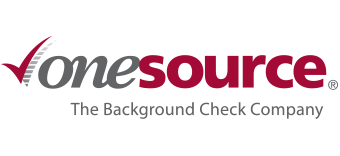The Equal Employment Opportunity Commission (EEOC) is a federal government agency tasked with enforcing civil rights laws against workplace discrimination. They investigate claims against businesses for discriminating based on race, color, national origin, religion, sex, age, disability, sexual orientation, gender identity, genetic information. The EEOC also ensures businesses do not retaliate against those who report or oppose a discriminatory practice.
Agencies as large and impactful as the EEOC have a lot of influence over how businesses conduct themselves. It can seem like a big task to identify all the regulations they place on your business and whether you are following them.
That’s why we have broken down some of the most commonly asked questions about the EEOC. Your business is likely already compliant with the regulations the EEOC applies to you. However, it’s good to be aware of what those regulations are. Knowing what they mean can further strengthen your hiring process.
How does the EEOC apply to my business?
The key factor in how the EEOC applies is how many employees your business has.
- If you have at least one employee: Employers must provide equal pay for equal work to male and female employees.
- If you have 15 to 19 employees: You cannot discriminate based on race, color, religion, sex (including pregnancy, sexual orientation, or gender identity), national origin, disability, and genetic information (including family medical history). You also must provide equal pay for equal work.
- If you have 20 or more employees: All of the above regulations apply. Additionally, you cannot discriminate based upon age (40 or older).
What are my responsibilities to my employees under the EEOC?
Here is a general list of your main EEOC obligations toward your applicants, employees, and former employees.
- You must pay male and female employees who perform the same work equally unless you can legally justify a pay difference.
- You cannot discriminate against or harass applicants in any way.
- Your employment policies or practices cannot have a negative effect on applicants or employees. All policies or practices must be related to the job and necessary for the operation of your business.
- You cannot use employment policies or practices that have a negative effect on applicants or employees who are 40 or older unless the policies or practices are based on a reasonable factor other than age.
- You may be required to provide reasonable accommodations because of an applicant’s or employee’s religious beliefs or disability.
- During the hiring process, you cannot request medical or genetic information from applicants. You may request medical or genetic information from employees only in limited circumstances. Any health information you do obtain must be kept confidential.
- No one can punish an applicant, employee, or former employee for reporting or opposing discrimination or participating in a discrimination investigation.
- You must display a poster at your business that describes federal employment discrimination laws, so employees are aware of their rights.
- Keep any employment records, such as applications, personnel records, and payroll records on file.
What can’t I ask candidates during hiring?
Your business’s ethics will drive what you do and don’t ask in interviews, but there are some questions you legally cannot ask. Specifically, employers can’t ask questions about an applicant’s disability. They also cannot ask questions that are likely to reveal whether an applicant has a disability. This applies even if the disability is clear. You can ask the applicant to describe or demonstrate how they would perform specific job tasks, but you can’t ask about their disability.
However, you can ask applicants who have disclosed their disability or have a clear disability if they need specific accommodations. You also can ask an applicant to voluntarily report that they have a disability for affirmative action purposes.
What do I do if my business receives an EEOC charge of discrimination?
If you follow the above guidelines and maintain a positive, healthy work environment, it is unlikely you will be charged with discrimination. Still, it is best to always be prepared. Should your business face an EEOC investigation, you should follow these steps.
- Review the charge notice carefully. It does not mean that you have violated EEOC laws, but rather is informing you that there has been a complaint of discrimination.
- Closely follow the directions on the EEOC charge notice. The notice will likely ask you to provide a response to the charge or a position statement. This is your chance to defend your organization against the complaint.
- Respond to requests for additional information from the EEOC, even if you believe that the charge is frivolous. They may help the EEOC dismiss the charge.
- Protect your employees from retaliation. Make sure no employees are punished for filing a complaint or contributing to an investigation. Retaliation is illegal, even if the original charge is dismissed.
- EEOC mediation can help you resolve the charge quickly at no cost.
- Contact the EEOC investigator assigned to your charge if you have questions.
Compliance is a wide and varied topic, but the experts at One Source can help you navigate ethical hiring with ease. Inquire today to see how we can collaborate to create a simple, efficient, EEOC-compliant hiring process for your organization.
